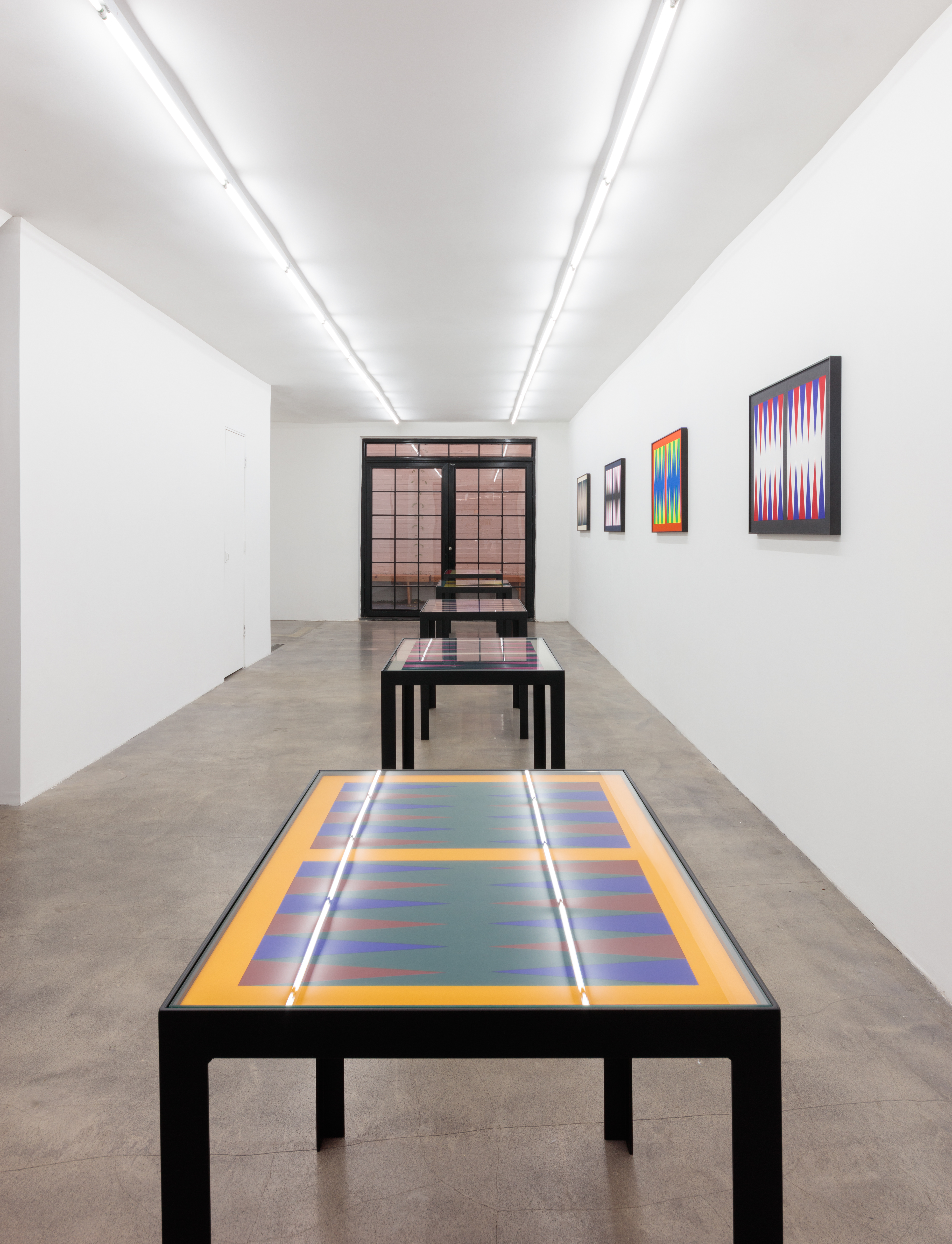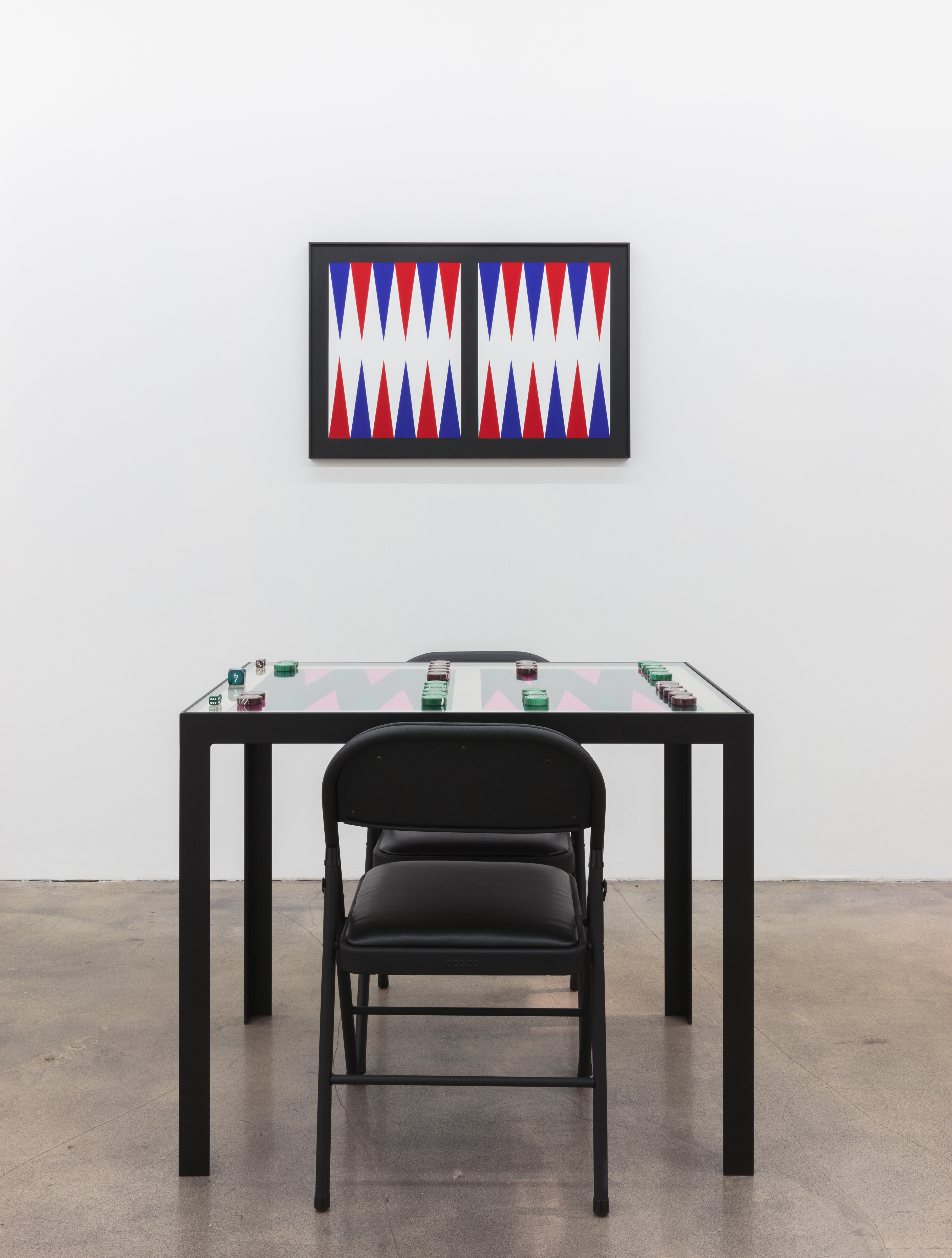2018/11/01 DOUBLES @ CLEARING



DOUBLES
C L E A R I N G Upper East Side
November 1 - December 22, 2018
Zak Kitnick’s exhibition – titled DOUBLES – introduces a series of paintings devised from the principles of backgammon, one of the world’s oldest games. DOUBLES frames the medium of painting within the context of Kitnick’s broader work, which crosses categories of art, decoration and utility to isolate their shared properties. Put differently, Kitnick’s work unthreads the DNA of aesthetic objects.
Using the backgammon pattern as a repeated motif in works of identical geometry, Kitnick’s paintings develop the seriality often characterizing the artist’s sculptures. In an art historical sense, Kitnick’s work takes up questions asked by various lineages of Conceptual Art, as in the example of Daniel Buren: What are the minimum requirements to establish a sense of authorship? Or, in Duchamp’s case: Why play the game of art when you can play an actual game, like chess?
DOUBLES makes reference to another circular game, baseball. Asserting an affinity between the two, the works in DOUBLES are titled from baseball phrases. Baseball, like backgammon, begins and ends at “home”, and the uniformity and repetition of the game’s cycle is broken up by infinite variations of play and possibility, and yet the direction is fixed, inevitable, playing out like the circle of life. Kitnick’s paintings use variations of a four-color pattern to echo these cyclical repetitions in a poignant modality of decorative and minimal color palettes, while also paying homage to Hard-edge and Op Art Painting movements.
The artist has requested works on view rotate as the show unfolds, lending the exhibition a sense of mobility. Powder coated steel table structures have been produced to the artist’s specifications, consisting of standard table legs and frames built to receive interchangeable framed paintings. Such a modular configuration allows the paintings to become playable backgammon boards, while also enabling Kitnick’s paintings to move through their own life-cycle, marked by function, abstraction and the final stage, decoration. In a nod to Martin Kippenberger’s 1987 work Model Interconti, which assembled a coffee-table with a Gerhard Richter painting, DOUBLES also questions the value distinction assigned to different classes of authored objects.
Visitors are welcome to play backgammon on the tables in the gallery.